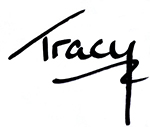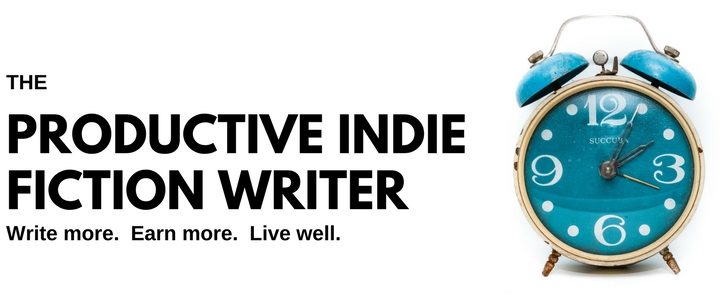
Following up on last week’s post about finding more time to read.
Once you’ve got back to reading for pleasure, which is key, you’ll quickly come across “other” reading. Call this purpose-driven reading. For example;
- How-to books that address issues you’re currently trying to resolve.
- White papers, booklets, PDFs and other documentation longer than the average email.
- Long emails.
- Blog posts on fiction writing and the indie publishing industry.
- Webinars, videos, and courses made up of videos that deal with any aspect of your indie fiction writing business
While videos aren’t “reading” per se, they can be treated in the same way as reading for the sake of extracting their information and doing something useful with it.
Don’t think of it as reading.
In fact, you really shouldn’t think of this type of reading as “reading” at all, even though reading (or listening) is the process by which you derive benefit from the material.
So think of it as work; this helps you approach the reading with maximum efficiency.
8 steps to maximize your informational reading
1. Should you read it at all?
I often find myself with non-fiction books on my reading list because somebody recommended them, or the topic is one that I think might be useful in the future – for example; a book on how to use AI tools. Or it might be on a topic that I’m already familiar with but feel like the book might help me become better at the subject. E.g.; a book on email markeitng.
The same can be said for any other non-fiction material that crosses my desk.
But reading anything just in case there is a useful nugget or two in it is probably a waste of time. There are too many books and sources of advice and information out there, and unless you intend to put the information into practice straight away, why bother reading it? The information could become outdated by the time you find a use for it, or worse, the information remains in your notebooks, untouched and overlooked.
Be judicious about what you read. If you’re reading “just in case” or simply because the topic intrigues you, then perhaps the book should be on your reading-for-pleasure pile, instead, when you can leisurely wander through the pages without the need or pressure to take clear notes.
A good example of that from my own life is most of the history books I read. I’m not doing immediate research for a specific topic. Instead, I’m usually absorbing all the history and culture of a specific era. It is the subtext and the feel of that era that will inform my fiction writing.
Besides, I’m a history nerd, so a new book in an era I like really is pleasure reading.
2 Have a (near) immediate reason for reading it.
Knowing why you’re reading something before you start to read. For shorter pieces, that could simply be to find the one fact you want to extract.
Maybe you’ve picked up a book that deals with setting up websites, or using WordPress.
In this case, you want to know the steps you need to complete to set up your own site.
3 Scan, first.
Get a 20,000 foot overview of the material before you begin to read word-for-word.
Look through the table of contents, or flip through and read the sub-headings. The aim is to get a feel for the structure of the text, and also to assess if you think the material will answer your question.
You can dip in and read a sentence or two, but don’t get bogged down in reading just yet.
If there is an introduction, scan through it; often introductions will break down what is in the book.
By the time you finish this scanning process, you will have a grasp of the author’s thesis.
Sometimes this is all you need out of the material. Perhaps you were looking for a solitary fact, or a short answer and your scanning process found the information.
Now ask yourself: Will this information be useful? Should you actually read it?
You’ll be surprised by how often the answer is “no.”
4 Now read
Now you need to read to pick up the fine points in the author’s argument. You already know the structure of the material. You’re filling in holes, so the structure holds together.
- Read at your desk, or somewhere where you can sit upright, and take notes as you read.
- Don’t read purpose-driven reading material where you read for pleasure.
5 Look for counter-arguments while you’re reading.
In your mind, challenge everything the author is asserting. Does their perspective hold up to examination? Can you trust the information?
Look for holes, missing logic.
Above all, look for reasons to not read any further.
Your mental mindset should be “prove it!”
This mindset helps you avoid taking onboard any information or advice that could have you spending time on tasks that won’t pay off, or spending money on projects that won’t pan out.
6 Take notes
Taking notes on the way though will help you grasp the reasoning holding up the author’s thesis.
Highlight or copy the text that provides reasons, proof, facts and logic that support the argument.
Good highlighting and notes will help you avoid re-reading the book; you can just read the notes and highlights and swiftly remember the important details of the book.
Plus, your notes can be added to your notebooks, where the information can be cross-linked and re-discovered in the future.
If it becomes clear that the information is flawed or useless, the notetaking isn’t wasted: you have a robust reading log entry, instead. If you come across the book in the future (a recommendation or review, a new edition, everyone raving about it), your notes will remind you to not waste your time.
7 Put the extracted information into practice
If you were reading to acquire a course of action, set that action project up and commit to putting it into practice.
If you’ve acquired the facts you were seeking, transfer them to where they’re needed (your current manuscript, your series bible, your plot outline, the email you’re writing, etc.)
8 Archive your notes…or not
If you were scanning a long email to extract the data points you need, you might not need a permanent record.
But the notes for most book-length material should probably be kept.
Practice at taking and keeping notes, plus tagging and linking them properly, will quickly teach you what notes are worth keeping and what you can discard with zero fear that you’ll regret getting rid of it.
And you’re done.
Informational reading should be approached with a determination to do the work efficiently and effectively and move on. It’s a tool in the indie fiction writer’s toolbox. A powerful tool, because it builds expertise, helps guide our businesses, and improve our craft. But it’s still just a tool and therefore it is worth learning to use it properly.

Write More, Faster Than Ever Before | Are You Prolific?
Editing Your Next Novel? Mark Posey offers fast, writer-friendly edits with zero drama. Check out services »
